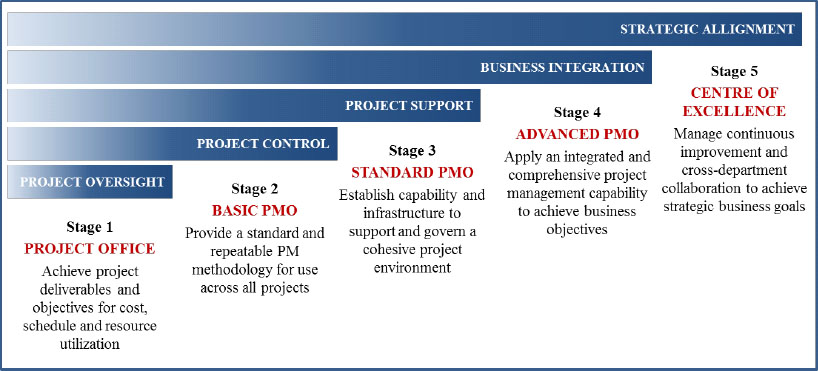Establishing a PMO
Implementation or redesign of PMO according to PMBOK®, PRINCE2®, IPMA® standards
PMO Design
The project office (PMO) is an organizational unit that ensures the standardization of processes related to project management and mediates the sharing of resources, methodologies, tools and techniques in this area for other parts of the organization. Its main goal is to ensure the standards and quality of project management in the organization in order to achieve high project success.
The structure and functions of the PMO tend to be different in organizations, mainly depending on the type, size and maturity of the organization. PMO can take the form of a small unit whose main role is to support managers with standard project templates, as well as large organizations including project, program and other managers and significant powers in the area of project selection and management.
When defining a PMO, it is therefore necessary not only to use proven theoretical concepts, but also to always tailor the structure and functions of the PMO to the current needs of the organization.
Customer needs
We usually encounter the following requirements from our customers:
- The customer’s organization has grown significantly and handles a greater number of projects. PMO does not exist in the current organization. The customer requires the introduction of a PMO and thus to ensure the standardization of project management and the utilization of economies of scope resulting from better inter-project coordination.
- The customer’s organization has an established PMO at a certain level of maturity and is looking for ways to increase the efficiency and success of its projects. For this reason, the customer requests a revision of PMO processes and functions and a re-design of the PMO in order to increase efficiency.
- The customer’s organization has specific problems associated with project management (for example in areas: project prioritization, resource allocation, late detection of risks, long time-to-market, etc.) and is looking for path for their removal.
RedTie approach to implementation
Our approach to PMO implementation / redesign is based on our team members’ extensive experience with PMO implementation and redesign in an international environment. It is based on both project standards (e.g. PMBOK ®, PRINCE2®, IPMA® or the PMO Competency Continuum model) and long-term experience in the field of project management.

Recommended implementation procedure
In practice, a two-phase implementation procedure has proven itself:
| Stage | Description | Difficulty Estimate |
|---|---|---|
| 1 |
Creating a PMO Assessment This phase is focused on getting to know the customer, identifying the maturity of project management in their organization and revealing key issues. A phase typically includes the following steps:
|
20 – 30 MDs approx (2 months) |
| 2 |
PMO creation / optimization
|
May vary significantly based on PMO Assessment outputs. |